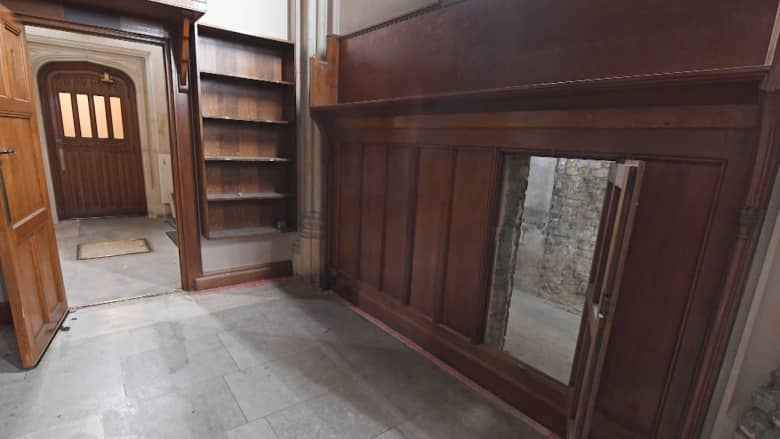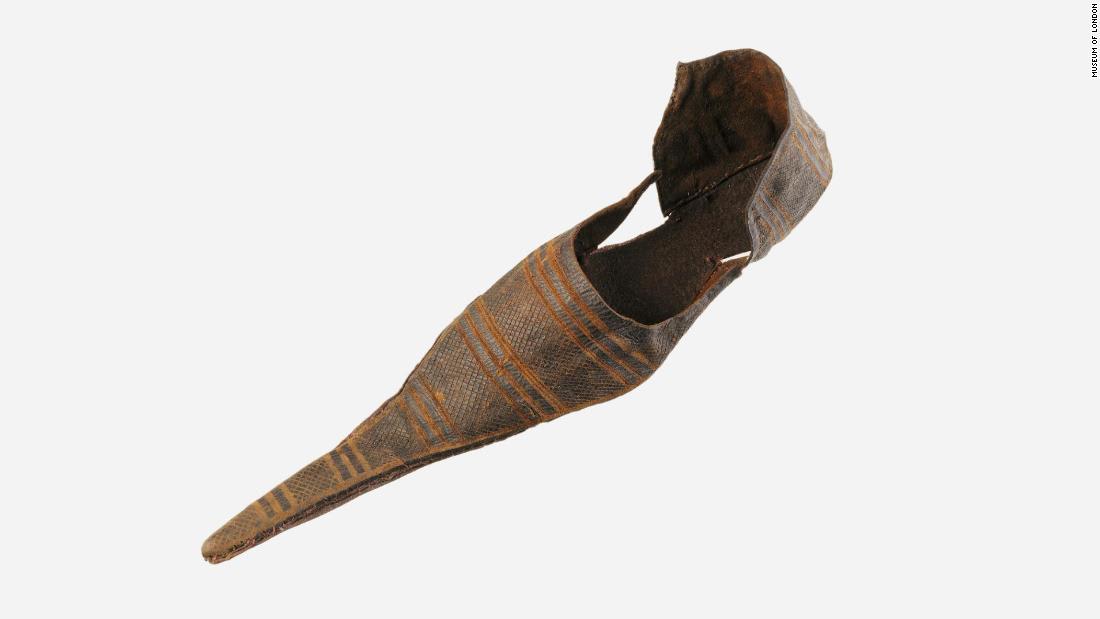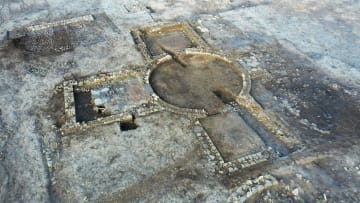دبي، الإمارات العربية المتحدة (CNN)-- كانت الأحذية الجلدية المدببة، والتي تعرف باسم poulaines، هي ذروة الموضة في القرن الرابع عشر ببريطانيا. ولكن، عانى الرجال والنساء في العصور الوسطى بسبب أحذيتهم الفاخرة، حيث أصيبوا بورم في إبهام القدم.
وتعد هذه الحالة المؤلمة شائعة اليوم، خاصة بين النساء.
وتفاجأت أخصائية علم الأمراض القديمة، جينا ديتمار، بعثورها على أدلة على الأورام، والمعروفة رسميًا باسم "إبهام القدم الأروح"، من بين بقايا الهياكل العظمية التي كانت تبحث عنها من أجل مشروع أوسع، حول تجربة الحياة في فترة العصور الوسطى.
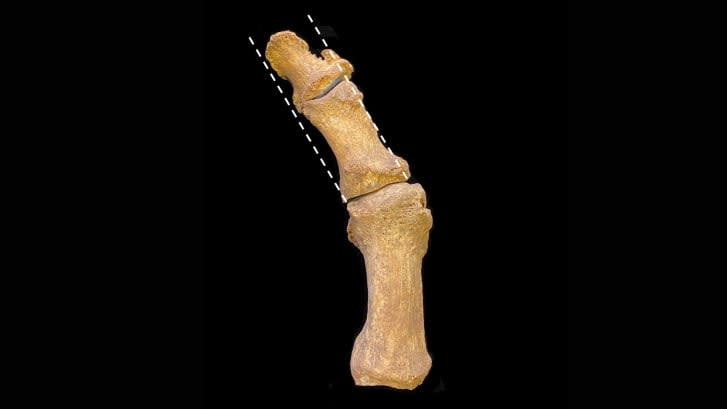
وقالت ديتمار، وهي زميلة باحثة في جامعة أبردين، وكانت في جامعة كامبريدج أثناء إجرائها البحث: "تحدث تغيرات تنكسية في عظام القدمين. هناك علامات عظمية واضحة جدًا على أن أصابع القدم تم دفعها جانبياً. وهناك ثقوب في العظام تشير إلى أن الأربطة كانت تنفصل. ويبدو أن النظر إلى العظم مؤلم".
ويتشكل الورم عندما يصبح إصبع القدم الكبير مائلًا. وغالبًا ما يرتبط التشوه بالكعب العالي والأحذية الضيقة، رغم أن هناك عوامل أخرى تلعب دورًا أيضًا مثل الوراثة.
ويمكن أن يكون الورم مؤلمًا، ويجعل التوازن أكثر صعوبة.
وحللت ديتمار وزملاؤها 177 هيكلًا عظميًا من القرن الحادي عشر إلى القرن الخامس عشر، كان مدفونًا في مدينة كامبريدج وحولها في المملكة المتحدة.
ووجد فريق البحث أن 27٪ من الهياكل العظمية التي يعود تاريخها إلى القرنين الرابع عشر والخامس عشر عانت من الأورام، مقارنة بنسبة 6٪ فقط التي تعود إلى القرنين الحادي عشر والثالث عشر.
وقال الباحثون إن القرن الثالث عشر الميلادي شهد ظهور أنماط جديدة من الملابس والأحذية في مجموعة واسعة من الأقمشة والألوان.
وتشير بقايا الأحذية التي تم التنقيب عنها في لندن وكامبريدج، في أواخر القرن الرابع عشر، إلى أن كل نوع من الأحذية تقريبًا كان مدببًا قليلاً.
وبقي القليل من الأحذية على حالها، رغم أن هناك مثال واحد محفوظ جيدًا في متحف لندن، والذي يبلغ طوله 31.5 سنتيمتر.
وقالت ديتمار إنه لم يتضح ما إذا كان الحذاء به كعب.
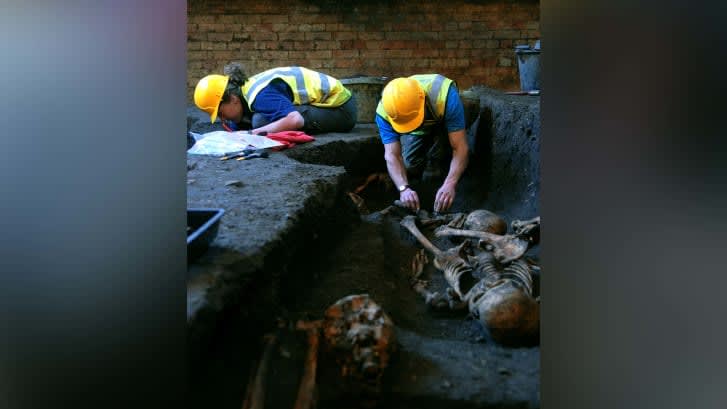
ويذكر أن المواد مثل الخشب، التي كان من الممكن صنع الكعب منها، لا يتم حفظها بشكل جيد في السجل الأثري.
واقترحت دراسة الهياكل العظمية، التي جاءت من أربع مقابر مختلفة حول كامبريدج، أن الأفراد الأكثر ثراءً وذوي المكانة العالية الذين يعيشون في المناطق الحضرية كانوا أكثر عرضة للإصابة بالورم.
وظهرت علامات التورم على 3٪ فقط من الهياكل العظمية في المقبرة الريفية، أي على بعد 6 كيلومترات جنوب المدينة، و10٪ من مقبرة الرعية في ضواحي المدينة، حيث تم دفن العديد من العمال الفقراء.
وكانت نسبة التورم شائعة لدى الذكور أكثر من الإناث.
وقالت ديتمار إنه كان هناك عدد أقل من الهياكل العظمية للإناث في عينة الدراسة، ولم يستطع الفريق معرفة ما إذا كان هناك انقسامًا بين الجنسين.
ووجدت الدراسة أيضًا أن الهياكل العظمية لأولئك الذين ماتوا فوق سن 45 عامًا بسبب "إبهام القدم الأروح"، كانوا أيضًا أكثر عرضة لإظهار علامات الكسور التي تنتج عادة عن السقوط.
وعلى سبيل المثال، يمكن أن تشير الكسور في الأطراف العلوية إلى سقوط الفرد للأمام.
وقالت ديتمار: "أظهرت الأبحاث السريرية الحديثة التي أجريت على مرضى إبهام القدم الأروح أن التشوه يزيد من صعوبة التوازن، ويزيد من خطر السقوط لدى كبار السن.. وبالتالي، هذا يفسر العدد الكبير من العظام المكسورة الملتئمة، التي وجدناها في الهياكل العظمية، خلال العصور الوسطى من هذه الحالة".
ونُشرت الدراسة في المجلة الدولية لعلم الأمراض القديمة.
